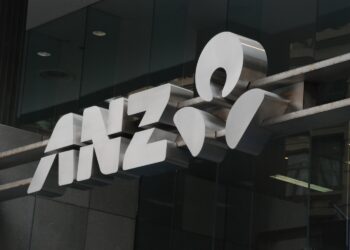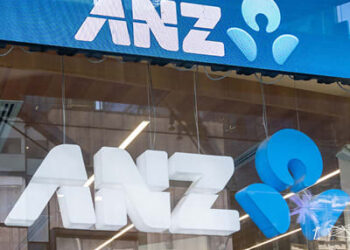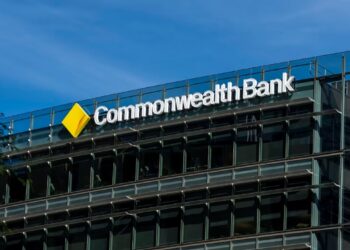The Treasurer revealed a $78 billion deficit (3.4 per cent of GDP), down from a $79.8 billion deficit the year before.
“Over the next three years, this will more than halve to 1.6 per cent,” Josh Frydenberg said.
He confirmed that net debt as a share of the economy will peak at 33.1 per cent at 30 June 2026, significantly lower than forecast last year.
Cost of living pressures
In a bid to relieve cost of living pressures for millions of Aussies and potentially secure their vote ahead of the May election, the government pledged to temporarily reduce the 44.2 cents a litre fuel excise by cutting it in half.
The tax cut is set to remain in place for six months.
Petrol stations are now supposed to pass the tax cut on to motorists.
“For the next six months, Australians will save 22 cents a litre every time they fill up their car.”
The budget also contains a one-off cash payment for millions of Australians to further alleviate the rising cost of living, which, coupled with the current low- and middle-income offset (LMITO) means Aussies are set to benefit from a tax cut of up to $1,500.
The one-off “Cost of Living Tax Offset” is worth $420 and is set to benefit 10 million working Australians in the form of a more generous LMITO.
LMITO will, however, end in the 2022 financial year.
The LMITO was a one-off tax offset worth up to $1,080 available to those earning from $48,000 to $126,000 a year.
The government decided to scrap the costly measure ahead of the election.
“Mr Speaker, tonight I also announce a new one‑off $420 cost of living tax offset for more than 10 million low‑and‑middle income earners,” Treasurer Frydenberg said.
“Individuals already receiving the low- and middle-income tax offset will now receive up to $1,500 and couples up to $3,000 from 1 July this year.”
LMITO has been extended twice, first in 2020 and again in 2021 at a cost of $7.8 billion.
The one-off $1,500 tax cut will be available from 1 July when individuals lodge their taxes for the 2021-22 financial year.
Mr Frydenberg also announced a new one‑off $250 Cost of Living Payment, delivered within weeks to six million Australians, aimed at pensioners, carers, veterans, job seekers, eligible self‑funded retirees and concession card holders.
Jobs
The government has forecast a 3.75 per cent unemployment rate before the end of September – a “historically” low rate set to remain over the four-year forward estimates period.
This is predicted to see wages growth pick up to their strongest in a decade.
Treasurer Frydenberg on Tuesday unveiled a series of measures to further encourage jobs growth and ensure the government’s target is met.
The government is set to provide $153.5 million over five years from 2021-22 to address workforce shortages, support job seekers to find employment, and make it easier for vulnerable Australians to participate in the workforce.
Funding includes:
• $52.8 million over five years from 2021-22 to deliver the new ReBoot initiative and support Workforce Australia to support up to 5,000 disadvantaged young Australians to develop employability skills, providing a pathway to employment services and training opportunities;
• $49.5 million over two years from 2022-23 to provide an additional 15,000 low and fee-free training places in aged care courses under the JobTrainer Fund;
• $44.6 million over two years from 2022-23 to continue support for businesses who employ mature-aged Disability Employment Services program participants through the Restart Wage Subsidy; and
• $1.5 million in 2022-23 to extend the trial of career coaching for job seekers of all ages participating in Digital Services under Workforce Australia. The trial will provide career coaching to digitally serviced job seekers, to help them secure employment.
The government is also backing Australia’s future tradies, plumbers, tilers and chefs with a $365.3 million investment that will support an extra 35,000 apprentices and trainees get into a job.
The Boosting Apprenticeship Commencements (BAC) wage subsidy offers employers up to 50 per cent of gross wages paid to an eligible and registered Australian apprentice to a maximum of $7,000 per quarter, for a maximum period of 12 months from commencement or recommencement.
Applications for the scheme were set to close on 31 March but will now run until the end of the current financial year.
Making homes accessible
The government is doubling the home guarantee scheme to 50,000 places a year.
Under the home guarantee scheme, buyers can secure a home with a deposit as little as 5 per cent of the funds required.
The expanded program will include 35,000 places per year for first home buyers from 1 July this year, while an additional 5,000 places per year will be made available for single parents from 1 July to 30 June 2025, allowing them to tap into the market with a 2 per cent deposit.
Regional Australians will also be able to access 10,000 regional home guarantees each year from October 2022 to July 2025.
According to Treasurer Frydenberg, the scheme has particularly supported women and frontline workers, with one in five guarantees issued to essential workers, almost 35 per cent of which were nurses and 34 per cent were teachers.
Halving of super drawdowns extended
The federal government is extending the 50 per cent reduction to minimum superannuation drawdown requirements for retirees into the next financial year.
Originally announced in March 2020 as part of the government’s response to the pandemic, Treasurer Josh Frydenberg said the reduction would now remain in place until 30 June 2023.
Around 1.8 million super accounts are currently subject to the minimum drawdown requirements that apply to account-based pensions and similar products.
Under the reduced minimum drawdown rates, self-funded retirees aged between 65 and 74 must withdraw 2.5 per cent of their account balance each year to be eligible for tax-free status on their earnings.
The minimum drawdown rate is currently 3 per cent for ages 75 to 79; 3.5 per cent for ages 80 to 84; 4.5 per cent for ages 85 to 89; 5.5 per cent for ages 90 to 94; and 7 per cent for ages 95 and above, while a rate of 2 per cent applies to those under 65.
Digital economy
The Digital Economy Strategy is back featuring investments and incentives to develop digital skills, artificial intelligence and cyber security.
Last year, the government placed $1.2 billion towards the creation of Australia’s digital future. It wants Australia to be a “leading digital economy and society” by 2030.
On Tuesday, the government vowed to provide $130.1 million over four years from 2022‑23 to continue implementation of the Digital Economy Strategy and drive digital transformation. Funding includes:
• $38.4 million over three years from 2022‑23, and $12.6 million per year ongoing from 2025‑26 to implement the government’s response to the Inquiry into the Future Directions for the Consumer Data Right;
• $30.2 million to extend the whole of government cyber hubs pilot, including the establishment of a fourth Cyber Hub Pilot in the Australian Taxation Office;
• $18.6 million over four years from 2022‑23 (and $3.2 million per year ongoing) to shape global critical and emerging technology standards;
• $13.6 million over four years from 2022‑23 to continue the Office of Future Transport Technology and support the digitalisation of the transport sector;
• $6.2 million over two years from 2022‑23 to position Australia as a world leader in regulating the digital economy and new technologies and the development of a Digital Age Policy;
• $4.8 million to continue the Digital Technology Taskforce for a further two years;
• $3.9 million over two years from 2022‑23 to support women to pursue career opportunities in Australia’s growing tech workforce; and
• $1.8 million in 2022‑23 to the Digital Transformation Agency to further support the development of the Digital Identity system, including the governance, regulatory frameworks and funding arrangements associated with the Digital Identity legislation.
Employee share schemes
The government will expand access to employee share schemes and further reduce red tape so that employees at all levels can directly share in the business growth they help to generate.
Where employers make larger offers in connection with employee share schemes in unlisted companies, participants can invest up to:
• $30,000 per participant per year, accruable for unexercised options for up to five years, plus 70 per cent of dividends and cash bonuses; or
• any amount, if it would allow them to immediately take advantage of a planned sale or listing of the company to sell their purchased interests at a profit.
The government will also remove regulatory requirements for offers to independent contractors, where they do not have to pay for interests. This measure is estimated to result in an unquantifiable impact on receipts over the forward estimates period.
Infrastructure boost
The government has committed $17.9 billion towards new and existing infrastructure projects in the infrastructure pipeline.
Key new commitments funded in the 2022–23 budget include:
· $3.1 billion in new commitments to deliver the $3.6 billion Melbourne Intermodal Terminal Package (VIC)
· $1 billion for the Sydney to Newcastle – (Tuggerah to Wyong) faster rail upgrade (NSW)
· $1.6 billion for the Brisbane to the Sunshine Coast (Beerwah‑Maroochydore) rail extension (QLD)
· $1.121 billion for the Brisbane to the Gold Coast (Kuraby – Beenleigh) faster rail upgrade (QLD)
· 678 million for Outback Way (NT, WA, QLD)
· $336 million for the Pacific Highway – Wyong Town Centre (NSW)
· $336 million for the Tasmanian Roads Package – Northern Roads Package – Stage 2 (TAS)
· $200 million for the Marion Road – Anzac Highway to Cross Road (SA)
· $145 million for the Thomas Road – Dual Carriageway – South Western Highway to Tonkin Highway and interchange at Tonkin Highway (WA)
· $140 million for Regional Road Safety upgrades (WA)
· $132 million for Central Australian Tourism Roads (NT)
· $120 million for the Adelaide Hills Productivity and Road Safety Package (SA)
· $46.7 million towards the Athllon Drive Duplication (ACT)
The budget also includes additional funding for existing projects and Roads of Strategic Importance corridors.
Treasurer Josh Frydenberg said infrastructure is a key pillar of the economic plan to grow the economy, with the measures in this budget set to create an additional 40,000 jobs across Australia.







